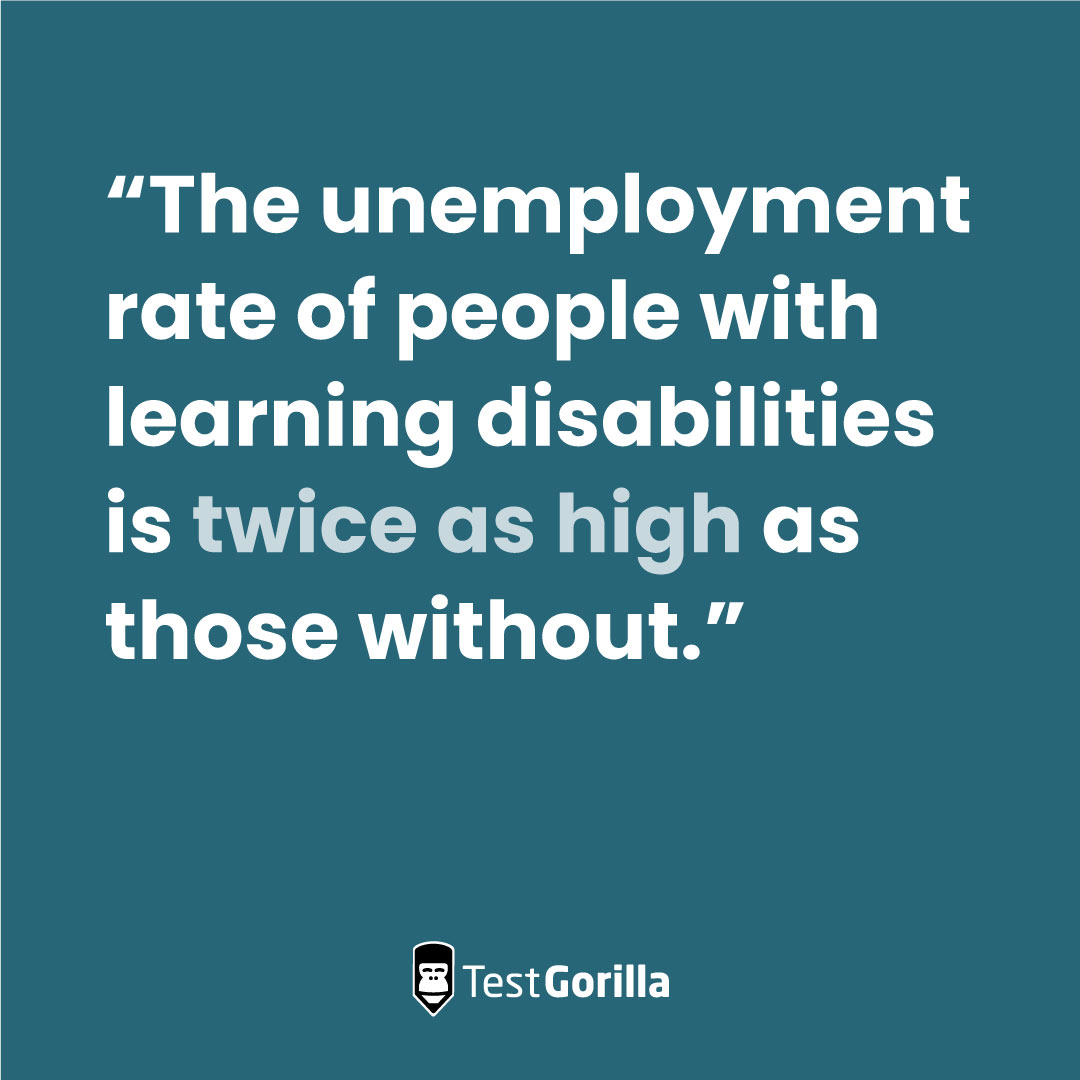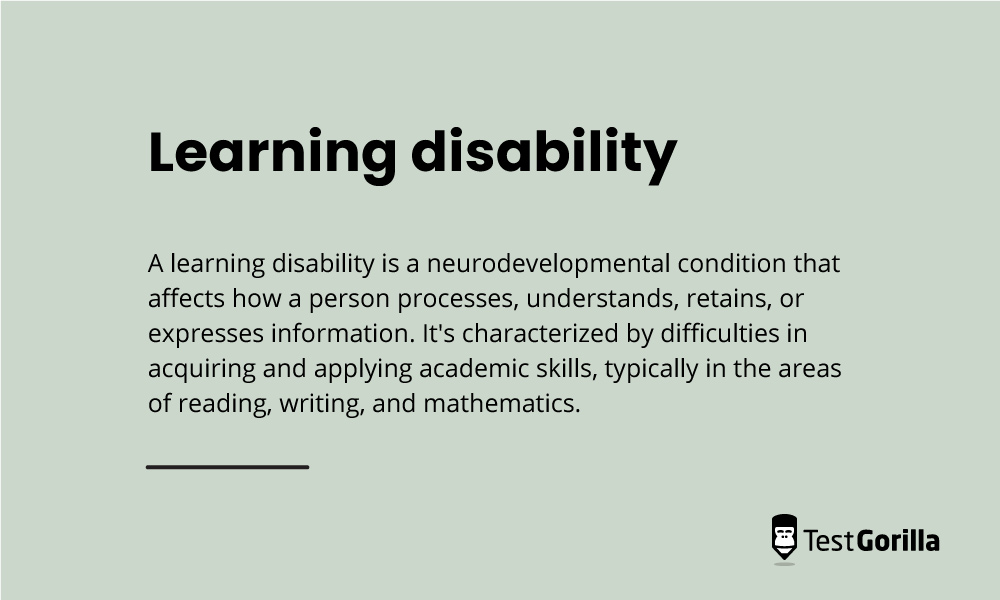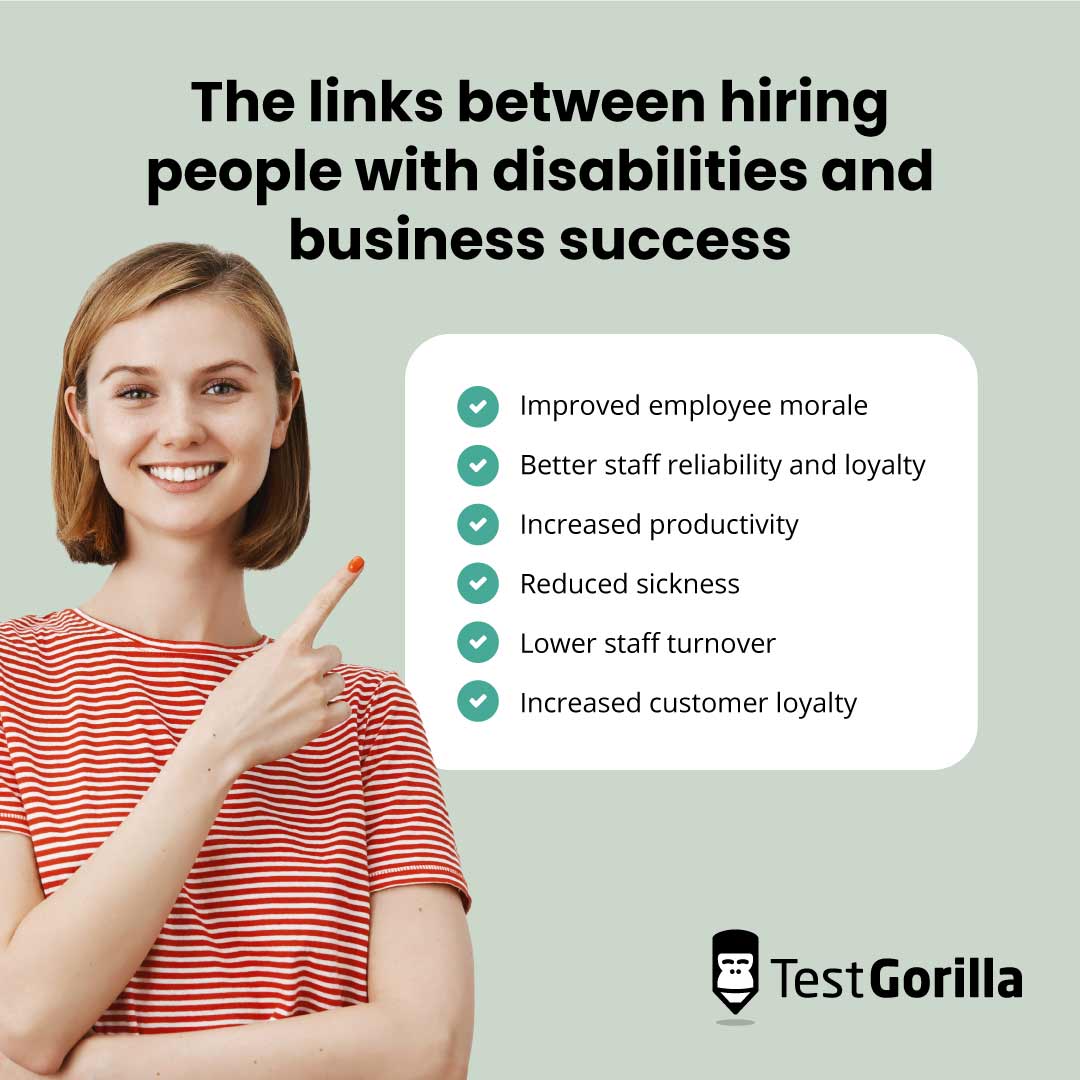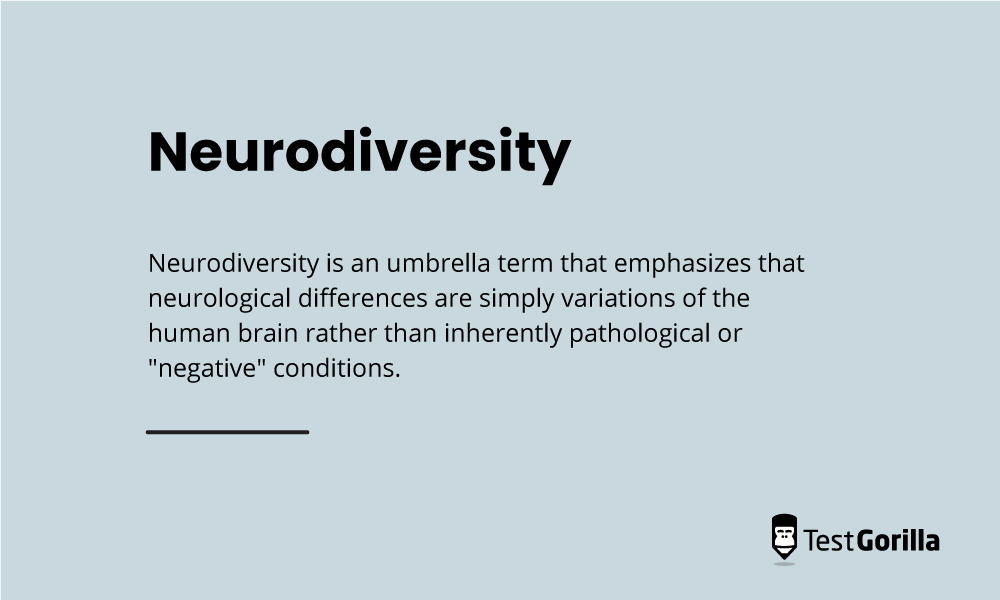National Disability Independence Day: Best practices for hiring people with a learning disability
July 26 is National Disability Independence Day, which commemorates the signing of the Americans with Disabilities Act (ADA) into law in 1990. The Act ensures people with disabilities are treated fairly and have the same professional opportunities as everyone else. It also gives them the same access to places like restaurants and stores, as well as to transportation and government services.
People with learning disabilities have the ability to work, excel in their jobs, and be as productive as their peers. They can contribute effectively to the team and often demonstrate loyalty and dedication, which can significantly reduce staff turnover.
Moreover, having individuals with learning disabilities as part of your team can also have a positive impact on staff morale. This leads to an environment of inclusivity and boosts overall team spirit.
However, regardless of the ADA and its positive impact on company culture and employee retention, the unemployment rate of people with learning disabilities is twice as high as those without. [1]
In this piece, we’ll look at the advantages of hiring people with learning disabilities and some best practices to follow. We’ll also examine how skills-based hiring can help create a diverse and inclusive culture, with a management team that has the skills to get the best out of employees with learning disabilities.
Table of contents
- National Disability Independence Day: Empowering people with learning disabilities in the workplace
- What are the advantages of hiring people with learning disabilities?
- 6 best practices for hiring people with a learning disability
- Hiring people with learning disabilities: diverse input equals better output
- Sources
National Disability Independence Day: Empowering people with learning disabilities in the workplace
National Disability Independence Day celebrates the independence and autonomy of people with disabilities.
The day recognizes the right of people with disabilities to live independently, make their own choices, and fully participate in all aspects of society. Therefore, it marks a major milestone in the advancement of disability rights in the US. It's also an opportunity to raise awareness about disability rights, inclusion, and access. This is still an issue, especially in the workplace.
For example, despite comprehensive laws against discrimination, the employment rate of people with a learning disability has fallen to 4.8% in the UK. [2] This means there's still a long way to go when it comes to fully accommodating adults with disabilities and understanding their positive impact on companies and employees alike (more on this later).
"The disability community has faced a long history of seclusion and discrimination, which continues to translate to unemployment and underemployment. However, research shows that disability inclusion is a proven good business decision. It increases overall productivity, offers a window into an untapped market, and boosts bottom lines." Jackie Dilworth, director of communications at The Arc of the United States.
Definitions
Learning disability | A neurodevelopmental condition that affects how a person processes, understands, retains, or expresses information. It's characterized by difficulties in acquiring and applying academic skills, typically in the areas of reading, writing, and math. |
Neurodiversity | An umbrella term that emphasizes that neurological differences are simply variations of the human brain rather than inherently pathological or "negative" conditions. |
Examples of learning disabilities | Conditions like Attention-Deficit Hyperactivity Disorder (ADHD), dyslexia, autism, dyscalculia, Tourette's Syndrome, and dysgraphia are considered learning disabilities and fall under the neurodivergence spectrum. |
What are the advantages of hiring people with learning disabilities?
There are a number of advantages for employees, organizations, and clients to having a diverse workforce. [3] For example, research shows there's a strong link between hiring people with disabilities and business success. [4] These benefits include:
Improved employee morale
Better staff reliability and loyalty
Increased productivity
Reduced sickness
Lower staff turnover
Increased customer loyalty
Additionally, when employees have different cognitive talents and are from a range of backgrounds, they bring a variety of perspectives and approaches. This gives your business a competitive advantage because your teams can be more innovative when developing ideas and solutions.
According to our State of Skills-Based Hiring report, diverse teams also financially outperform less diverse teams, which speaks to an overall increase in employee satisfaction and motivation at work.
"Research shows companies that have improved their D&I practices over time were four times more likely to have total shareholder returns that outperform their peers. In addition, people with disabilities, on average, stay in their jobs longer than their counterparts without disabilities. This helps employers reduce turnover cost and save time on rehiring and retraining new employees." Jackie Dilworth, director of communications at The Arc of the United States.
Case study: Bristol University [4]
Bristol University took steps to enhance its recruitment process to promote inclusivity and enable more people with learning disabilities to apply. It collaborated with its HR colleagues to implement adjustments in two key areas: the arrangement and distribution of information on job opportunities, and how it conducts interviews. These changes helped create a more accessible and accommodating experience for applicants with learning disabilities. As a result, the university saw an increase in neurodivergent staff and therefore, a boost in employee morale and disability awareness on campus.
Now that we’ve discussed the benefits of having neurodiverse individuals on your team, let's take a look at some best practices for hiring them.
6 best practices for hiring people with a learning disability
Although there’s growing recognition and acceptance of neurodiversity in society, it still poses challenges within the workplace. In fact, 85% of autistic adults with a college degree are unemployed in the US. [5] This is largely due to outdated hiring methods that rely on candidates making a "good impression."
For neurodivergent individuals, this type of evaluation often prevents them from scoring well in areas such as confidence, communication skills, and likeability. Judging neurodivergent people based on criteria set up for neurotypical people undermines their unique abilities and needs.
To build a truly diverse workforce, you need to design for neurodiversity. This way, people with learning disabilities can excel during the interview process and more effectively demonstrate their skills. On that note, here are six best practices for hiring people with a learning disability.
1. Create a welcoming environment
The statistics on unemployment rates among people with learning disabilities point toward unconscious bias and stigma as the main contributors to their difficulty finding work.
However, by prioritizing psychological safety, you can combat these negative attitudes and behaviors, and help build a neuroinclusive workplace. This means creating an environment that encourages people to voice their opinions without fear of judgment or scrutiny.
Here are some other ways you can create a welcoming working environment for neurodivergent candidates:
Use a skills-based approach to recruiting. Evaluating candidates based on resumes, likeability during interviews, and degrees, severely limits your talent pool. Instead, use talent assessment software to test candidates on their applied skills and ability to develop skills that can be taught. This helps prevent bias during hiring and gives you more flexibility to tailor the application process to the specific needs of your candidates and the role.
Raise awareness. Educate all employees about learning disabilities and common challenges faced by individuals with such disabilities. It's also important to encourage open discussions to dispel misconceptions and foster empathy and understanding.
Foster an inclusive environment. Emphasize teamwork, collaboration, and mutual support. Celebrate diversity through various initiatives and events, such as diversity training sessions, multicultural celebrations, or employee resource groups.
Establish a supportive network. Create a support network for individuals with learning disabilities. This could involve assigning mentors or buddies who can offer guidance and encouragement. Encourage teamwork and peer-to-peer interactions to foster a sense of belonging.
2. Hire managers with the skills to accommodate workers with a learning disability
It's important to hire and develop great leaders with the skills to accommodate workers with a learning disability. This helps amplify the welcoming environment you're creating and encourages self-advocacy in the company.
By hiring managers that empower individuals with learning disabilities to advocate for themselves, neurodivergent staff can more freely voice their opinions, concerns, suggestions, and needs. This helps employees feel comfortable discussing their challenges and asking for assistance when necessary.
Skilled managers have the ability to understand their employees' needs, provide constructive feedback, and leverage their strengths. They also know how to maintain open lines of communication and be approachable for discussions on particular issues or concerns.
You can use talent assessment software to recruit managers with the right attitudes and skills to foster this type of environment. Then, with this core feature of their candidacy objectively assessed, you can address other areas of their suitability during the interview, including how well they align with your organization's culture, values, and mission.
Here are some key skills you can test for:
3. Assign a job coach
You might need to seek professional guidance to better support employees with learning disabilities. Getting a job coach can help neurodivergent individuals integrate into their roles and support employers in creating an inclusive working environment.
Job coaches are experienced in identifying and implementing appropriate accommodations to meet the specific needs of employees with learning disabilities. They can collaborate with employers to make necessary adjustments, such as providing assistive technologies or creating alternative communication methods. These accommodations can enhance productivity, job satisfaction, and overall well-being.
Moreover, a job coach can provide personalized support and guidance to help individuals with learning disabilities develop the necessary skills and competencies for their job roles. They can break down tasks into manageable steps, provide training, and recommend strategies to overcome challenges. This helps employees build confidence and perform their job responsibilities effectively.
Case study: Sodexo [4]
Sodexo, a specialist catering company, wanted to increase diversity and inclusion on its team. However, when it came to hiring someone with a learning disability, it sought external support to help them provide a positive employee experience. The job coach organized disability awareness training for the staff, emphasizing simple adjustments like clear directions, extra time for learning, and verbal instructions instead of written ones. With the job coach's support, Sodexo’s new hire, Zoe, seamlessly integrated into the team, aided by an assigned buddy. The ongoing communication between the job coach and the employer ensures continued support and potential future training. Zoe's performance has been excellent, leading the manager to express a desire for more employees like Zoe.
4. Make reasonable adjustments
Make sure you engage in open communication with employees to understand their specific requirements and that accommodations are available to individuals with learning disabilities. These might include:
Providing assistive technologies like speech-to-text software, text-to-speech software, softer lighting, earphones, and time management tools
Offering flexible work schedules
Allotting additional time for tasks or assignments
Providing modifications tailored to the individual's needs, for instance, specific accommodations for smells, sights, noises, and temperature
"What’s important to know is that 60% of accommodations cost nothing, and the rest are small prices to pay to hire and retain a good employee. The degree of support needed will vary among individuals. Not all people with disabilities need accommodations to perform their jobs and many others only need a few accommodations. Never assume that your assistance is needed, and always speak directly to the person you are hiring on how you can best support them." Jackie Dilworth, director of communications at The Arc of the United States.
5. Pay fairly
Fair compensation demonstrates a commitment to equal treatment and inclusion of individuals with learning disabilities. It sends a message that their contributions are valued and recognized. When people with learning disabilities are paid fairly, it helps foster a sense of belonging and promotes a more inclusive work environment.
Additionally, to build an engaged and high-performing workforce, people need the opportunity to achieve some financial independence. Fair compensation empowers individuals with learning disabilities to make their own choices, pursue personal goals, and participate fully in society.
6. Identify the soft skills necessary for a role
To match candidates to the right role, you need to identify the necessary skills to succeed in the job. Then, you can set up talent assessments that test a candidate's ability to perform. For individuals with learning disabilities, it's important to focus on in-demand soft skills like communication or emotional intelligence that are more difficult to teach rather than role-specific hard skills like coding or project management skills.
Moreover, since every role requires a variety of soft skills, you can significantly increase your candidate pool and improve internal mobility by focusing on hard and soft skills. This also shows employees that you're willing to train and upskill them, which improves employee loyalty to the company and their likelihood of applying.
Here are some soft skills talent assessments you can use:
Pro tip: Not every candidate with a learning disability will be able to complete a skills-based talent assessment, which you can address by making accommodations for candidates with extra requirements. These will depend on the unique capabilities of the individual and their specific needs.
Hiring people with learning disabilities: diverse input equals better output
National Disability Independence Day, on July 26, celebrates the right of US people with disabilities to be treated fairly and enjoy the same access to employment and opportunities as others. However, the law that the day celebrates can only go so far: It’s also up to you to create a welcoming environment for people with learning disabilities. This includes overhauling hiring methods that can penalize them.
By testing candidates in a way that lets them fully showcase their value and skill sets, you can have a transformative impact on people’s confidence, team dynamics, and overall organizational success.
This is especially true for neurodivergent candidates who are discriminated against in traditional hiring practices and evaluated on their interviewing skills instead of the skills needed for the role itself.
Skills-based hiring lets you level the playing field for candidates with different needs and backgrounds. It also helps foster a truly diverse and inclusive workplace that effectively honors disability rights and awareness.
For example, talent assessment software like TestGorilla allows for accommodations so you can build an inclusive workforce with a range of perspectives, experiences, and skills.
Want a bias-free approach to attracting diverse talent?
Skills-based hiring lets you test candidates on real markers of job success – and level the playing field.
Download the State of Skills-Based Hiring 2022 report to learn more
Sources
"Persons With a Disability: Labor Force Characteristics — 2022." (2022). US Department of Labor. Retrieved July 12, 2023. https://www.bls.gov/news.release/pdf/disabl.pdf
"Employment Rates for People with Disabilities 2021-22." (2022). Base UK. Retrieved July 12, 2023. https://www.base-uk.org/employment-rates
"Greater progress on diversity and inclusion essential to rebuild productive and resilient workplaces." (2022). International Labour Organization. Retrieved July 17, 2023. https://www.ilo.org/global/about-the-ilo/newsroom/news/WCMS_841085/lang--en/index.htm
"Employers guide to employing people with a learning disability." (n.d.) Need2Know. Retrieved July 12, 2023. https://www.learningdisabilities.org.uk/file/4330/download?token=JalbsQhC
"85% of adults on the autism spectrum are unemployed — and hiring practices may be to blame." (2023). EBN. Retrieved July 12, 2023. https://www.benefitnews.com/news/how-to-create-equitable-workplace-experiences-for-autistic-talent
Related posts
Hire the best candidates with TestGorilla
Create pre-employment assessments in minutes to screen candidates, save time, and hire the best talent.
Latest posts
The best advice in pre-employment testing, in your inbox.
No spam. Unsubscribe at any time.

Hire the best. No bias. No stress.
Our screening tests identify the best candidates and make your hiring decisions faster, easier, and bias-free.
Free resources
This checklist covers key features you should look for when choosing a skills testing platform
This resource will help you develop an onboarding checklist for new hires.
How to assess your candidates' attention to detail.
Learn how to get human resources certified through HRCI or SHRM.
Learn how you can improve the level of talent at your company.
Learn how CapitalT reduced hiring bias with online skills assessments.
Learn how to make the resume process more efficient and more effective.
Improve your hiring strategy with these 7 critical recruitment metrics.
Learn how Sukhi decreased time spent reviewing resumes by 83%!
Hire more efficiently with these hacks that 99% of recruiters aren't using.
Make a business case for diversity and inclusion initiatives with this data.























